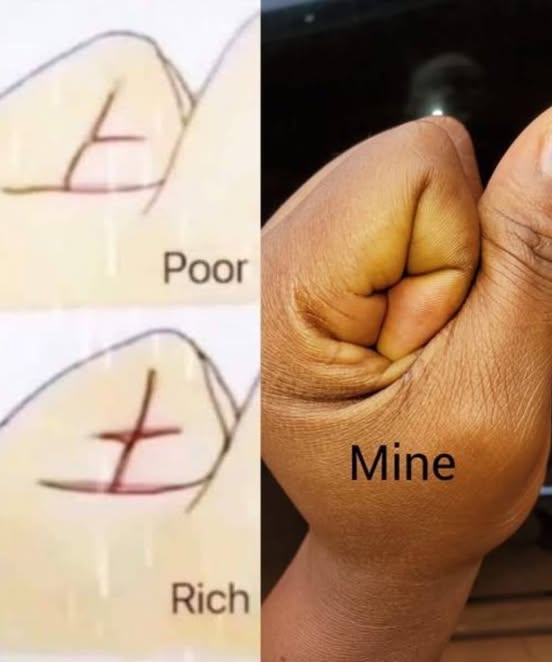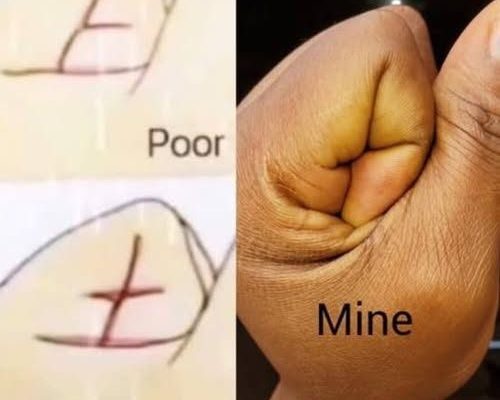Palmistry, or chiromancy, is the ancient practice of reading the lines and shapes on the hands to reveal a person’s character or future. Many cultures believe that specific palm markings can indicate wealth, luck, or personality traits.One example often shared in palmistry illustrations is a crossed line near the thumb. In some interpretations, this marking is linked to financial struggles and labeled as “Poor.”Though palmistry lacks scientific support, it remains a popular form of spiritual insight and self-reflection around the world.
Palmistry, also known as chiromancy, is an age-old practice that involves interpreting the lines, mounts, and shapes of the hands to uncover insights about a person’s character, destiny, and potential future. Rooted in ancient civilizations such as India, China, Egypt, and Greece, palmistry has transcended generations and cultures, continuing to intrigue people around the world. Practitioners believe that the human hand is a map that records both inherited traits and life experiences, offering symbolic guidance to those who seek meaning beyond the visible world.
According to palmists, the major lines—such as the heart line, head line, and life line—reveal foundational aspects of one’s emotional nature, intellectual tendencies, and overall vitality. Meanwhile, minor lines and unique markings on the palm are thought to add nuance and detail, sometimes indicating specific life challenges or talents. One commonly cited example is a crossed line located near the base of the thumb, often within or near the Mount of Venus (the fleshy area near the base of the thumb). In certain traditional interpretations, this mark is believed to symbolize financial hardship or a tendency to face material struggles. Some diagrams or books may even label this marking as “Poor,” suggesting a warning or area of concern in the realm of money and resources.
While interpretations may vary depending on cultural background and individual palmists’ perspectives, such markings are not viewed as fixed fate but rather as symbolic cues. For many, the lines in the palm are not seen as deterministic but as potential indicators of patterns and possibilities. A line may shift or fade over time, which believers see as a reflection of personal growth or changes in life’s direction.
Despite its long-standing history and widespread popularity, palmistry is not supported by scientific evidence and is generally considered a pseudoscience by the academic and medical communities. There is no empirical proof that the lines on a person’s hand correlate with their personality or future events. Nonetheless, palmistry remains a beloved form of self-reflection, spiritual curiosity, and cultural tradition. For many, having their palm read is less about predicting the future and more about gaining insight, affirmation, or encouragement to reflect on their life’s path.
In modern times, palmistry has found a renewed presence through books, online tutorials, and social media content. Whether approached with belief or as a curiosity, it continues to captivate with its blend of symbolism, mysticism, and storytelling. Ultimately, the appeal of palmistry lies in its power to invite introspection and offer meaning through the simple act of observing one’s own hands.



